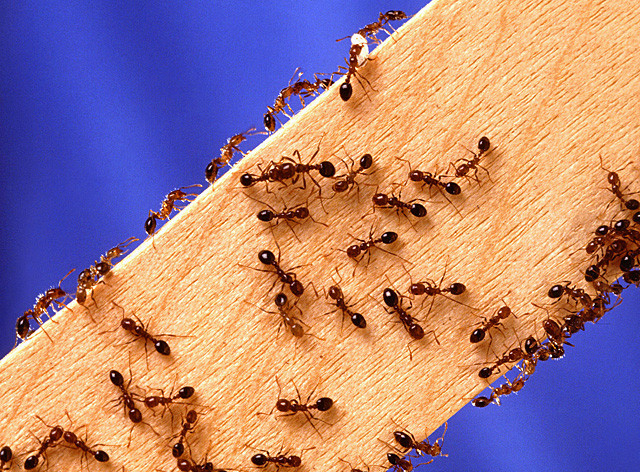Robot Dog Hunts Down Pests' Nests With Help From AI
The Xiaomi 'CyberDog' scored a 90% accuracy rate, three times better than humans fared

Researchers in China and Brazil used artificial intelligence to train a robot dog to sniff out nests of highly destructive red imported fire ants far better than human inspectors.
The Xiaomi "CyberDog" robot was programmed using a machine-learning model with a dataset of more than 1,000 images of the ants' nests, the Tech Xplore website reported Saturday, citing a study published by the journal Pest Management Science.
The CyberDog was also programmed to press on any nest it found with a front paw to disturb the colony inside and prompt worker ants to come out and act aggressively to defend the nest, according to Tech Xplore.
Testing in an open field showed the robot had an accuracy rate of 90% in identifying active nests from empty ones, alerting humans to treatment sites. Only 30% of students who received standard training and inspected the same field were able to identify the nests, according to the report.

"Fire ant nests are difficult for untrained personnel to identify and confirm in the field, and searching large areas can be time-consuming and exhausting under the hot sun," researcher Eduardo Fox, a postdoctoral student at the State University of Goiás in Brazil, told Tech Xplore.
"A robot could automatically locate the nests without requiring specially trained individuals and operate at various times of the day regardless of temperature conditions."
Red imported fire ants (RIFA) are native to South America and are believed to have been introduced into the United States between 1933 and 1945, likely after being carried in ships' ballast, according to the National Invasive Species Information Center.
They've since invaded about 350 million acres across the southern U.S., causing about $8 billion in economic losses by eating crops and communication and electrical system components. They've also spread to the Caribbean, Europe, Asia and Australia.
"RIFA proliferate rapidly in established areas, displacing local fauna and flora by outcompeting and eliminating sensitive species," Fox said. "Small vertebrates, such as birds and reptiles, are particularly vulnerable."
The pests are extremely aggressive when their nests are disturbed by humans or animals, quickly climbing up their target and repeatedly injecting painful venom through a stinger on their hind ends. Like bee stings, the venom can be life-threatening to anyone who's allergic to it.
© Copyright IBTimes 2025. All rights reserved.





















